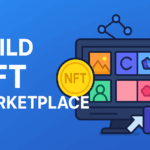In today’s fast-paced digital world, peer-to-peer (P2P) payment apps have revolutionized the way we transfer money. The Key Components for Creating a Successful P2P Payment App. From splitting a dinner bill with friends to paying rent to your landlord, these apps have made transferring money easier, faster, and more convenient than ever before. But what does it take to create a successful P2P payment app that stands out from the competition? In this article, we will unlock the secrets and delve into the key components that make a P2P payment app successful.
We will explore the importance of security, user experience, seamless integration, and innovative features that keep users engaged. Whether you’re a fintech startup or an established financial institution looking to enter the P2P payment app market, this article will provide you with valuable insights and strategies to create a winning app that captures the attention of users and drives success in this rapidly evolving industry. Let’s dive in and discover the secrets behind successful P2P payment apps!
The Growing Popularity of P2P Payment Apps
P2P payment apps have experienced a significant rise in popularity in recent years. With the convenience of transferring money with just a few taps on a smartphone, it’s no wonder that these apps have gained traction among users. The ease of use, quick transactions, and elimination of the need for physical cash or checks have made P2P payment apps a preferred choice for millions of users worldwide.
Additionally, the COVID-19 pandemic has further accelerated the adoption of P2P payment apps. With social distancing measures in place, people turned to digital payment solutions to avoid physical contact and reduce the risk of spreading the virus. As a result, the demand for P2P payment apps skyrocketed, highlighting the need for reliable and secure platforms in the market.
Key Components of a Successful P2P Payment App
Creating a successful P2P payment app requires careful consideration of various key components. These components not only ensure a seamless user experience but also prioritize security and innovation. Let’s take a closer look at each of these components and understand their significance in creating a winning app.
User Experience and Design Considerations
One of the most critical factors that contribute to the success of a P2P payment app is its user experience (UX) and design. A well-designed app with an intuitive interface enhances user satisfaction and encourages frequent usage. When developing a P2P payment app, it’s crucial to prioritize simplicity, ease of navigation, and visual appeal.
To create a seamless user experience, consider implementing features such as a streamlined registration process, clear transaction history, and personalized settings. Intuitive icons, easily understandable labels, and responsive design are also essential to ensure a positive user experience across different devices and screen sizes.
In addition to a user-friendly interface, the design should also convey trust and security. Utilize visual cues such as lock icons, encryption symbols, and clear privacy policies to instill confidence in users when it comes to sharing their financial information.
Security Features and Encryption Technology
Security is paramount in the world of P2P payment apps. Users trust these platforms with their sensitive financial information, making it crucial to implement robust security features and encryption technology to safeguard their data.
End-to-end encryption is a must-have for any P2P payment app. This encryption ensures that data is protected during transmission, making it nearly impossible for unauthorized individuals to access or intercept the information. Implementing multi-factor authentication, strong password requirements, and biometric authentication options also adds an extra layer of security.
Regular security audits, vulnerability assessments, and staying up-to-date with the latest security standards are essential to protect user data from emerging threats. By prioritizing security, you not only build trust with your users but also ensure compliance with data protection regulations.
Seamless Integration with Existing Banking Systems
For a P2P payment app to be successful, it must seamlessly integrate with existing banking systems. This integration allows users to link their bank accounts, debit cards, or credit cards to the app, enabling them to transfer funds to and from these accounts effortlessly.
When developing your P2P payment app, consider partnering with banks or payment processors to ensure smooth integration. Implementing industry-standard application programming interfaces (APIs) enables secure and reliable data exchange between the app and the financial institutions.
Additionally, enabling instant transfers and minimizing transaction processing times is crucial to enhance the user experience. The Key Components for Creating a Successful P2P Payment App. The ability to quickly transfer funds between the P2P payment app and users’ bank accounts adds convenience and encourages users to choose your app over competitors.
Ease of Use and Intuitive Interface
Simplicity and ease of use are key factors that determine the success of any app, including P2P payment apps. Users expect a hassle-free experience when transferring money, so it’s essential to design an interface that minimizes friction and eliminates unnecessary steps.
When developing your P2P payment app, focus on creating a straightforward and intuitive user journey. Ensure that the app’s functionalities are easily accessible and clearly labeled. Minimize the number of clicks required to complete a transaction and provide users with instant feedback on the status of their transfers.
Furthermore, consider incorporating features such as transaction reminders, automatic bill splitting, and contact synchronization to simplify the payment process. By making your app user-friendly and intuitive, you increase the chances of users adopting and recommending it to others.
Personalization and Customization Options
In a competitive market, offering personalization and customization options can set your P2P payment app apart from the rest. Allowing users to customize their app’s theme, notifications, and privacy settings can enhance their sense of ownership and improve their overall experience.
Consider implementing features that enable users to create personalized payment profiles, add notes or memos to transactions, and set preferences for transaction limits and notifications. These customization options provide users with a sense of control and tailor the app to their specific needs and preferences.
Moreover, personalization can extend beyond the app itself. Collaborating with merchants or brands to offer exclusive deals, discounts, or rewards to your app users can further enhance engagement and foster loyalty.
Marketing and Promotion Strategies for P2P Payment Apps
Creating a successful P2P payment app goes beyond developing a great product. It requires effective marketing and promotion strategies to reach and attract your target audience. Here are some strategies to consider:
1. **Digital Marketing:** Utilize various digital marketing channels such as social media, search engine optimization, content marketing, and email marketing to raise awareness about your app and its unique features. Create engaging content that highlights the benefits of using your app and how it solves users’ pain points.
2. **Influencer Marketing:** Collaborate with influencers or industry experts who can endorse your app and reach a wider audience. Influencer marketing can help build credibility and trust in your app, driving more downloads and user engagement.
3. **Referral Programs:** Implement a referral program that incentivizes users to invite their friends and family to use your app. Offering rewards or discounts for successful referrals can encourage user acquisition and increase app downloads.
4. **Partnerships:** Partner with relevant businesses or organizations to cross-promote your app. For example, collaborate with e-commerce platforms, ride-sharing services, or food delivery apps to offer seamless payment options and exclusive discounts.
5. **App Store Optimization (ASO):** Optimize your app’s presence on app stores by using relevant keywords, compelling descriptions, and high-quality visuals. ASO increases the visibility of your app and improves its chances of being discovered by potential users.
By implementing these marketing and promotion strategies, you can increase your app’s visibility, attract more users, and drive long-term success in the competitive P2P payment app market.
Case Studies of Successful P2P Payment Apps
Examining case studies of successful P2P payment apps can provide valuable insights and inspiration for creating your own app. Let’s explore two notable examples:
Venmo
Venmo, a popular P2P payment app in the United States, has gained widespread popularity due to its seamless user experience and social integration. Venmo allows users to make quick payments to friends, split bills, and even share payment activity on social media platforms. The app’s social features have made it a preferred choice among millennials and Gen Z users, who value the ability to publicly showcase their social transactions.
Alipay
Alipay, developed by Alibaba Group, is a leading P2P payment app in China. Alipay’s success can be attributed to its integration with other services, such as e-commerce, ride-hailing, and food delivery. Users can seamlessly make payments within the app for various services, eliminating the need for multiple apps or payment methods. Alipay’s extensive network of partner merchants and its integration with daily life activities have contributed to its dominance in the Chinese market.
Studying the strategies and features implemented by successful P2P payment apps like Venmo and Alipay can provide valuable insights into what works and what resonates with users.
Challenges and Future Trends in the P2P Payment App Industry
While P2P payment apps have experienced significant growth, there are several challenges and future trends to consider. Some of these challenges include:
1. **Security Concerns:** As P2P payment apps continue to handle large volumes of financial transactions, the risk of security breaches and fraud increases. Staying ahead of emerging threats and constantly updating security measures is crucial to maintain user trust.
2. **Regulatory Compliance:** P2P payment apps must navigate complex regulatory landscapes, including anti-money laundering (AML) and know your customer (KYC) regulations. Compliance with these regulations is vital to avoid legal issues and maintain the integrity of the financial system.
3. **Global Expansion:** As P2P payment apps expand globally, they must adapt to local payment methods, currencies, and cultural preferences. Understanding the unique needs of different markets and tailoring the app’s features accordingly is essential for success.
4. **Integration with Emerging Technologies:** Integration with emerging technologies such as blockchain, artificial intelligence, and biometrics presents new opportunities for P2P payment apps. Exploring these technologies and their potential applications can give apps a competitive edge.
In terms of future trends, P2P payment apps are likely to witness advancements in areas such as contactless payments, voice-activated transactions, and increased integration with smart devices. The Key Components for Creating a Successful P2P Payment App. Additionally, the rise of cryptocurrencies and decentralized finance (DeFi) may also impact the P2P payment app industry, offering new possibilities for secure and borderless transactions.
Conclusion
Creating a successful Cryptoexchange4u P2P payment app requires a deep understanding of user needs, a commitment to security, and a focus on innovation. By prioritizing user experience, implementing robust security features, ensuring seamless integration with existing banking systems, and offering personalization options, you can create an app that stands out in a crowded market.
Additionally, effective marketing and promotion strategies, along with studying successful case studies, can help you reach your target audience and drive app adoption. However, it’s important to stay updated with the challenges and future trends in the industry to remain competitive and adapt to evolving user preferences.
Unlocking the secrets to a successful P2P payment app is an ongoing process, but with the right components and strategies in place, you can create an app that not only captures the attention of users but also drives success in the rapidly evolving world of digital payments.






















0 Comments